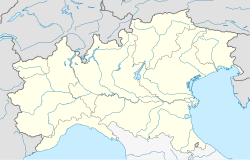This article needs additional citations for verification .(January 2022) |
 | ||||||||||||||||
| General information | ||||||||||||||||
| Location | Viale Zara, Milan | |||||||||||||||
| Coordinates | 45°29′32.6″N9°11′33″E / 45.492389°N 9.19250°E | |||||||||||||||
| Owned by | Azienda Trasporti Milanesi | |||||||||||||||
| Platforms | 2 (line 3) 1 (line 5) | |||||||||||||||
| Tracks | 2 (line 3) 2 (line 5) | |||||||||||||||
| Construction | ||||||||||||||||
| Structure type | Underground | |||||||||||||||
| Platform levels | 2 | |||||||||||||||
| Accessible | yes | |||||||||||||||
| Other information | ||||||||||||||||
| Fare zone | STIBM: Mi1 [1] | |||||||||||||||
| History | ||||||||||||||||
| Opened | Line 3: 16 December 1995 Line 5: 10 February 2013 | |||||||||||||||
| Services | ||||||||||||||||
| ||||||||||||||||
| ||||||||||||||||
Zara is an interchange station between Lines 3 and 5 of the Milan Metro. The station opened in 1995. It was the final stop on Line 3 until 2003, when Maciachini was opened.
It was the final stop on Line 5 and its only link to the rest of the network from the line's opening on 10 February 2013 until its extension to Porta Garibaldi on 1 March 2014.
The station is located on Viale Zara, in the municipality of Milan.



